Automated Guided Vehicles | Los Angeles

Raymond West is a Los Angeles warehouse automation equipment supplier.
We offer sales, repair and service for many types of AGVs.
Call us today at (562) 944-8067.
What is an AGV?
Often known as automatic guided vehicles or self-guided vehicles, automated guided vehicles (AGVs) are material handling systems or payload carriers that travel autonomously throughout the floors of a warehouse, distribution center or production facility, without an onboard worker.
What are Automated Guided Vehicles used for?
Common AGV applications include retrieval and storage in storage facilities and DCs, usually in support of order picking. They are also put to use for transport of raw materials, work-in-process, and finished products in factories.
What are the main advantages of Self Guided Vehicles?
1. Reduced Labor Costs: AGVs can significantly decrease labor expenses. A one time cost can get rid of the continuous costs of salaries, taxes, and benefits associated with a full time employee.
2. Increased Safety: contemporary AGVs utilize sophisticated video cameras, lasers, or other sensing units that allow them to "see" and respond to their environment instantaneously. Humans can get careless or distracted, whereas self guided vehicles do not. AGVs can also be used in harsh environments or around hazardous materials where human safety is jeopardized.
3. Increased Productivity & Accuracy: AGVs can work 24 x 7, never needing breaks or tiring. They can make repeated treks across a large building effortlessly. They also do not make the kinds of mistakes that humans are prone to making.
4. Modularity: most AGV solutions can be introduced gradually, displacing a few workers here and there without a massive expenditure in advance. As automation requirements expand, more AGVs can quickly be added to the system.
How do AGVs work?
AGVs are shepherded by a mix of sensor-based supervision systems and software. They can maneuver safely through a warehouse or production facility by using impediment detection bumpers and following carefully vetted paths, while utilizing precisely regulated acceleration and deceleration.
AGV navigation is generally managed by one of these types of systems:
- Vision guidance: cameras log the AGV's environment, and the vehicles use these cataloged images to plot a course. Vision guidance is standalone, meaning no adjustment is needed to a warehouse or factory infrastructure for this type of navigation.
- Laser target navigation: with laser based equipment, reflective tape is affixed to racks, wall surfaces, posts and other stationary objects. AGVs utilize laser transmitters to rebound laser beams off of these reflectors and then utilize the distance and angle of items to navigate.
- LiDAR: LiDAR systems transmit laser pulses to determine the range between the AGV and objects in its vicinity. This data is used to develop a comprehensive map of the setting. Like vision guidance, no adjustment of a facility is needed.
- Inertial navigation: transponders embedded into a facility floor surface route AGVs along a defined track.
- Wired navigation: these systems utilize wire tracks embedded into a warehouse or factory flooring. The wire transmits a signal that an AGV recognizes via a sensing unit or antenna system.
- Magnetic guide tape: this style of AGV uses magnetic sensors and follows a route laid out by magnetic tape.
What are the different kinds of Autonomous Guided Vehicles?
There are numerous types of automated guided vehicles. Many AGVs resemble other human-operated vehicles yet are engineered to maneuver in the absence of continuous human supervision or assistance.
- Forklift AGVs: forklift automated guided vehicles are a commonly utilized kind of AGV in warehouses. They're built to transfer pallets without the assistance of a human operator.
- Automated Guided Carts: an automated guided cart is the most basic type of AGV. They can transport all kinds of materials, from entire pallets to small components. AGCs are regularly utilized in storage, sorting, and cross-docking applications.
- Tugger AGVs: towing, or "tugger" AGVs pull non-powered, payload-carrying carts trailing them in a train-like configuration. These kinds of automatic guided vehicles are typically utilized for moving heavy loads over long distances. Often times they are programmed to make several pickups and dropoffs along their course.
- Unit Load Handlers: unit load handlers ferry solitary loads like specific items, or a discrete pallet or tote.
- Heavy Burden Carriers: these are utilized for extremely heavy payloads like castings, coils or plates.
Los Angeles Automated Guided Vehicle Supplier
If you'd like a complete analysis of AGV possibilities for your warehouse, DC or manufacturing facility, you can talk to an expert at Raymond West by calling (562) 944-8067.
Raymond West's Los Angeles facility serves much of Los Angeles County, including Cypress, Santa Fe Springs, Whittier, La Mirada, Downey, Pico Rivera, Los Angeles, Montebello, El Monte, Rosemead, Alhambra, South Gate, Lynwood, Compton, Westmont, Gardena, Torrance, Carson, San Pedro, La Habra, City of Industry, Walnut, Inglewood, Hawthorne and all surrounding areas. Raymond West | Los Angeles Material Handling Equipment Supplier 5560 Katella Ave
Cypress, CA 90630
(562) 944-8067
You May Also Like:

Autonomous Mobile Robots | Los Angeles
Autonomous Mobile Robots (AMRs) can improve warehouse efficiency, safety, and productivity. Discover the different types of AMRs and the process of implementation.
Learn More

Pallet Shuttles
We supply a full range of warehouse automation equipment including pallet shuttle systems. If you'd like to find out more about automation possibilities for your warehouse, give us a call today.
Learn More
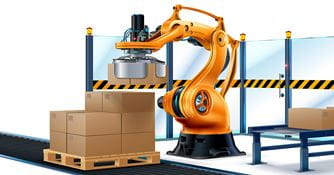
Robotic Palletizers | Los Angeles
Robotic palletizers are a flexible and cost-effective solution for warehouses to improve efficiency, reduce labor costs, and enhance safety by handling a wide range of products at high speeds with higher accuracy and scalability.
Learn More
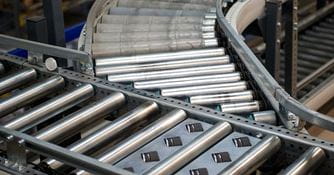
Sortation Systems | Los Angeles
Raymond West supplies a full range of conveyor and automation products, including all types of sortation solutions. To speak with a Raymond automation expert, phone us at 562-944-8067.
Learn More
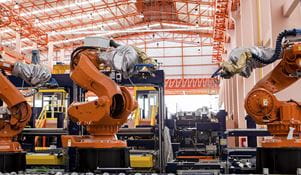
Warehouse Robotics
Warehouse Robotics can change the economics of your warehouse. Raymond West is among the top warehouse automation suppliers in the Western US. Give us a call today!
Learn More
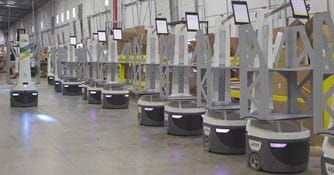
Locus Robotics | Los Angeles
Raymond West Intralogistics Solutions is an authorized distributor of advanced automation solutions from Locus Robotics.
Learn More

Warehouse Automation
Warehouse costs are skyrocketing. Smart warehouse operators are squeezing every last dollar out of their facilities though increased density and automation technology.
Learn More
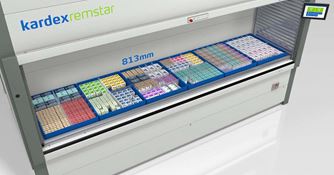
Vertical Lift Modules | Los Angeles
Maximize storage efficiency with automated Vertical Lift Module (VLM) systems and discover the benefits of high-density storage, automation, and customized solutions for your warehouse or distribution center.
Learn More

